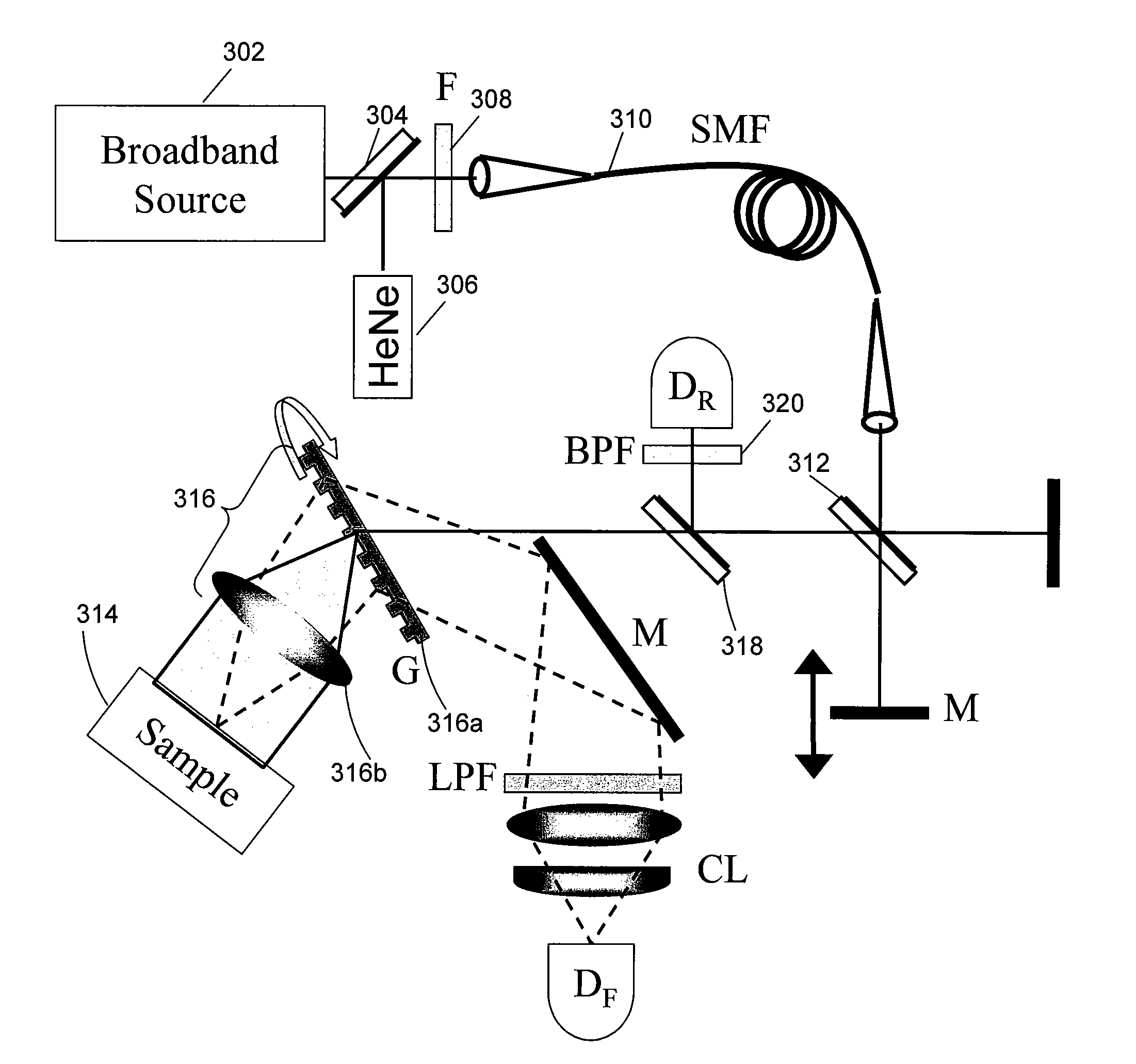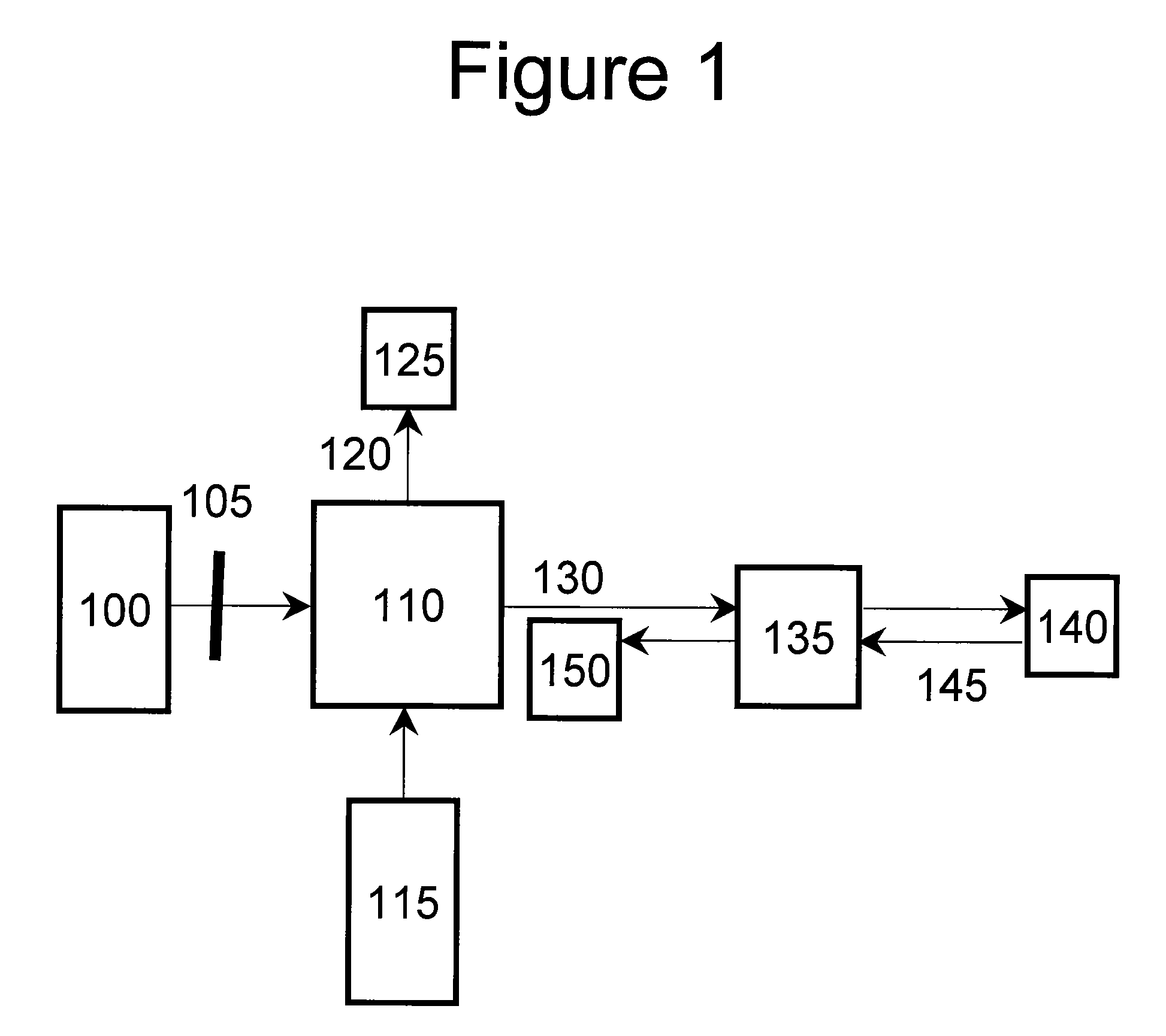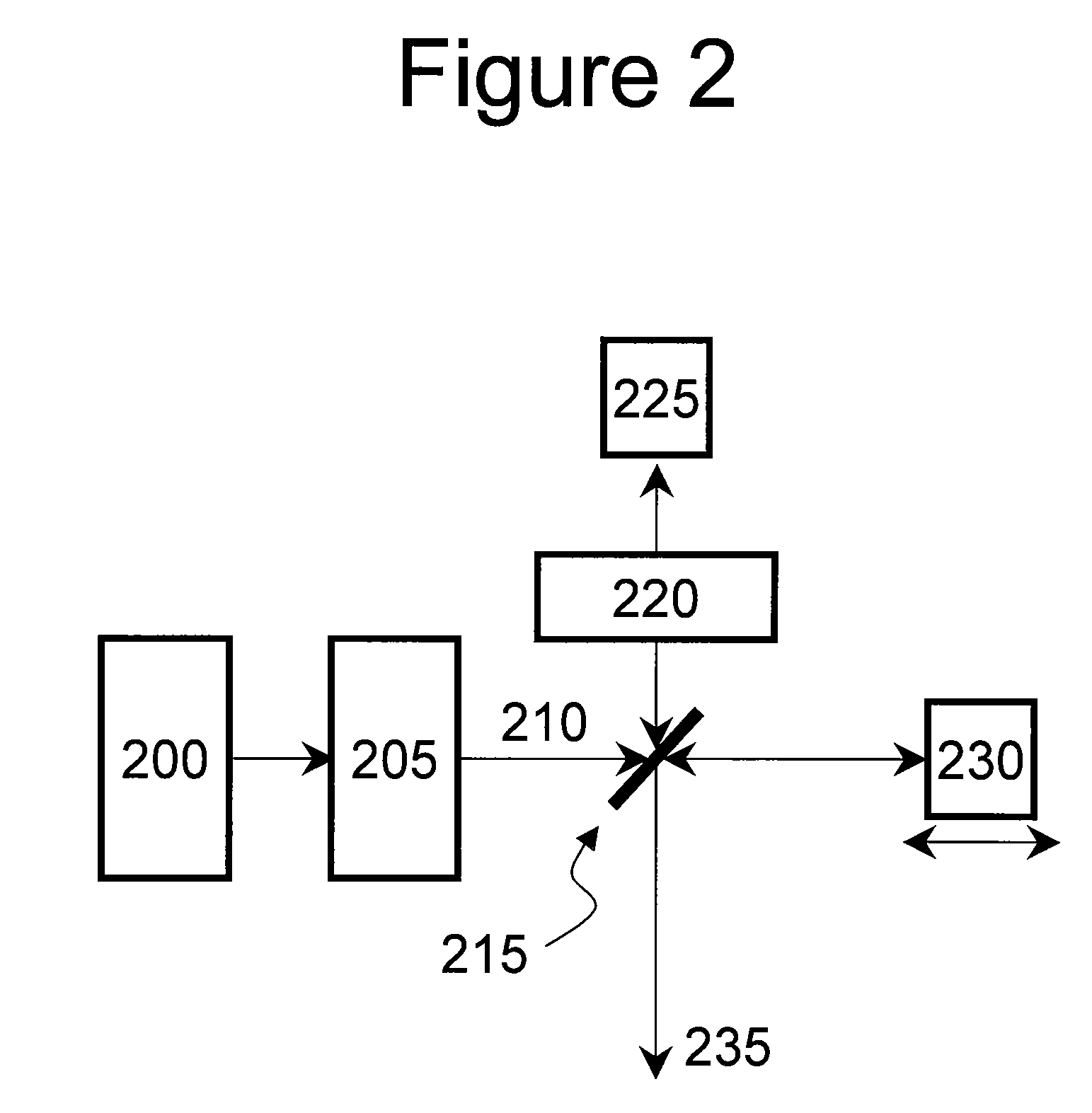Arrangements and methods for facilitating photoluminescence imaging
a technology of photoluminescence and arrangement, applied in the direction of optical radiation measurement, interferometric spectrometry, diagnostics using spectroscopy, etc., can solve the problems of ineffective spectroscopic methods and arrangements implementing the same for decoding the image, and the performance of high-quality fluorescent imaging procedures through a miniature flexible probe may be difficul
- Summary
- Abstract
- Description
- Claims
- Application Information
AI Technical Summary
Benefits of technology
Problems solved by technology
Method used
Image
Examples
Embodiment Construction
[0048]FIG. 1 shows a schematic diagram of -portions of a spectrally and frequency encoded (“SFE”) system. For example, light 100 can be filtered by filter 105 to match the absorption band of the fluorophore, and provided into an interferometer 110, which can be a Michelson interferometer, as well as a Sagnac, Mach-Zehnder, Twyman-Green interferometers, etc. The input light is affected by the interferometer 110 so as to produce a spectral modulation on the input light. Light 130 from the interferometer 110 then can illuminate a dispersive element 135 which can precede or follow a lens. Each wavelength component with its unique modulation frequency can be focused at a distinct location on a fluorescent sample 140. Fluorescence in the sample 140 is excited, a fluorescent light 145 returns through the grating lens pair 135, and can be collected and directed to a detector 150.
[0049]The detected light can be processed via a Fourier transformation or the like to recover a fluorescence inte...
PUM
 Login to View More
Login to View More Abstract
Description
Claims
Application Information
 Login to View More
Login to View More - R&D
- Intellectual Property
- Life Sciences
- Materials
- Tech Scout
- Unparalleled Data Quality
- Higher Quality Content
- 60% Fewer Hallucinations
Browse by: Latest US Patents, China's latest patents, Technical Efficacy Thesaurus, Application Domain, Technology Topic, Popular Technical Reports.
© 2025 PatSnap. All rights reserved.Legal|Privacy policy|Modern Slavery Act Transparency Statement|Sitemap|About US| Contact US: help@patsnap.com



